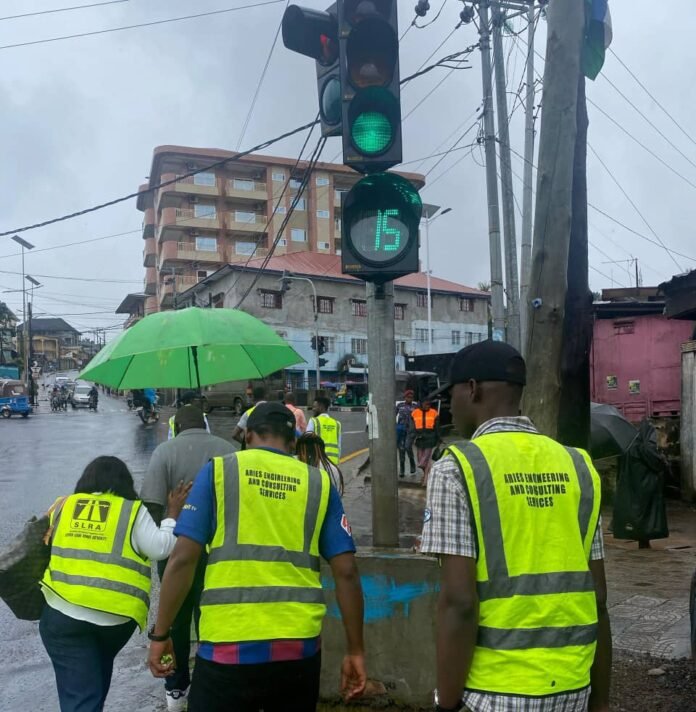By: Audrey Raymonda John
The Ministry of Transport and Aviation (MoTA), in collaboration with the Sierra Leone Roads Authority (SLRA) and Aries Engineering and Consulting Services (the Traffic Light Consultant), conducted a joint site assessment of the traffic signal systems at seven major intersections in Freetown on Wednesday, 13th August. This exercise is an essential step toward the formal handover of the traffic management infrastructure from MoTA to SLRA.
The assessment was led by Ing. Chernor Jalloh from the Ministry, with support from representatives of SLRA and Aries Engineering and Consulting Services, the firm contracted as the Traffic Signal Consultant.
According to Ing. Chernor Jalloh, the joint inspection was conducted to confirm the operational status of all installed traffic signals before they are officially transferred to SLRA. He explained that the Ministry had installed and operated the systems for approximately one year, following their implementation under the Integrated and Resilient Urban Mobility Project (IRUMP).
“All traffic signals are currently functional,” said Ing. Jalloh during the assessment.
He further explained that the joint exercise ensures SLRA is fully prepared to take over the maintenance and operation of the systems. The Ministry has already trained SLRA staff to ensure a smooth transition and long-term sustainability.
The transfer of responsibilities to SLRA is in line with its mandate to manage all road infrastructure assets in Sierra Leone.
The next step in the process is the formal handover ceremony of the traffic signal systems and their spare parts, scheduled for 15th August 2025 at the Ministry of Transport and Aviation’s Conference Room, 7th Floor, Youyi Building.
The event is expected to be attended by the Minister of Transport and Aviation, the Minister of Works and Public Assets, the Director General of SLRA, the Project Coordinator of IRUMP/CAMIP, and other dignitaries.
This transition marks a significant milestone in improving traffic flow and safety across the capital and ensuring the long-term functionality of key urban mobility systems.

